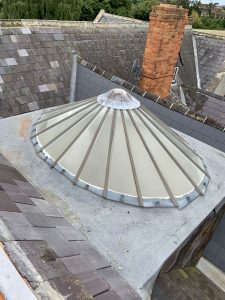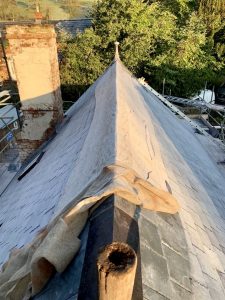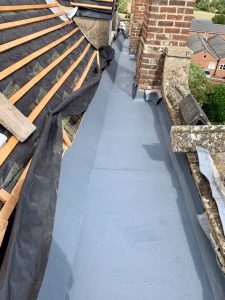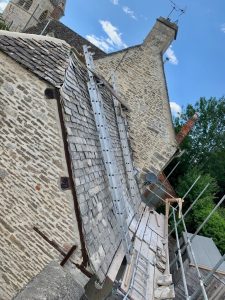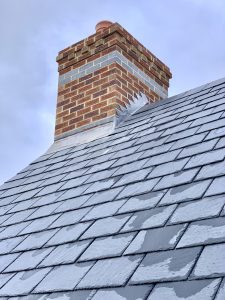From endless TikToks to the Whatsapp conspiracy theories, its pretty easy to get lost in the online world during this hiatus from normality, and consistent with the times, you may have been left feeling a little less than normal. Its time to put down the phone and get stuck into all the jobs that you’ve stuck on the back burner and ignored. From growing tomatoes to clearing the gutters, take a look at our top lockdown DIY tips, helping keep yourself occupied. What’s more, doing something useful over the next few weeks is simpler than you think, and you don’t even have to leave the house for supplies…
Upcycle
On the topic of upcycling, you’ll be surprised what a little paint and sandpaper can do to restore your tired old furniture. Dig out some sandpaper and get to work reviving your garden  furniture, perfect for your new Friday nights in, or try your hand at a make-shift bird feeder out of old plant pots or mason jars. With the weather looking promising, why not have an evening
furniture, perfect for your new Friday nights in, or try your hand at a make-shift bird feeder out of old plant pots or mason jars. With the weather looking promising, why not have an evening
round a fire out doors by making your own fire pit, if you’ve got one, an old washing-machine drum makes the perfect base to sit around and watch the sun go down.
If you want to take things even further, declutter and revive your furniture for a new owner, simply upload your creations online and opt for contact-free courrier services, securing a few extra pennies without even having to step out of the front door.
Take to the Attic
Ah everyone’s favourite storage dumping ground, the attic. Take some time to tidy and clear out your attic during the next few weeks and you’ll never know what you’ll find! Use this as an opportunity to check your attic for roof leaks and carry out your own mini roof inspection yourself. If you’re feeling up to it and have the materials, save some pennies and get to work on one of the most unappealing jobs out there, fitting your roof insulation. Get ahead of the curve and prepare your roof for winter early, providing that even sweeter feeling of a lower energy bill when the time comes around.
Build a Bookshelf
 Time at home in the sun provides the perfect opportunity bury your head in a mountain of books in the sun, however it’s quite rare to ever find a perfectly tidy bookshelf that isn’t overflowing. Use what you have around you and prop up a small shelf to store your favourite page turners, from wood scraps and bricks to old wooden ladders, embrace the concept of upcycling and throw yourself into a project like this. You could even try growing some flowers in old pots or jars for the ideal personalised bookends.
Time at home in the sun provides the perfect opportunity bury your head in a mountain of books in the sun, however it’s quite rare to ever find a perfectly tidy bookshelf that isn’t overflowing. Use what you have around you and prop up a small shelf to store your favourite page turners, from wood scraps and bricks to old wooden ladders, embrace the concept of upcycling and throw yourself into a project like this. You could even try growing some flowers in old pots or jars for the ideal personalised bookends.
Grow your own
The Easter holidays, filled with the agonising peril of finding new ideas to keep the kids entertained at home. Minimise your shopping trips and use up your left over kitchen scraps to reduce waste and get the children involved in a fun and rewarding activity that isn’t an Easter egg hunt. Try your hand at re-growing tomato seeds or maybe even an apple tree, this is a great project to get your children involved in that’ll last well-beyond the lockdown period.
Whilst garden centres are closed, many are offering contact-free deliveries, helping to keep the business afloat and keeping your garden looking better than ever, meaning that this is definitely an option to consider if you find yourself itching to get into the garden.
Check out what Trioscape has to offer here
Declutter your Gutters
Sunny weather? No rain? Something must be up. Take this time to get started on that one job we’ve been nagging you about for months but you haven’t quite had the energy to do it… your gutters. As you may have heard us mention once or twice, cluttered gutters can lead to devastating leaks springing up in your home, so take the time while the weather’s nice and leaves are starting to grow on trees to give your gutters a little TLC.
Get Painting
The perfect job in the Easter sunshine, add a lick of pain to any dull looking walls to lift your spirits and get in some quality family time. Save the pennies and relish in your newfound free time, order paint online to avoid going to the shops and enlist the help of the kids to channel your inner artists; you’ll be surprised what a lick of paint can do!
Take up Sewing
This year has seen a huge movement towards sustainable living, including reusing and recycling what we already have at home, and what better way to do it than now? Patch up your old, tatty looking cushions and piece back together the fabric that’s been torn apart by the dog, there’s no time like the present!
Clear out your wardrobe and dig out the jeans you ripped but couldn’t quite bear to throw away because “they’ll come in handy one day”, and try stitching on a colourful patch to give your denim a new lease of life.
Now surely at least one of these suggestions is enough to keep you busy enough to not want to leave the house, so keep washing those hands and please remember to stay home, save lives, and protect the NHS. As always, we’re here to help and whilst we may not be working, please don’t hesitate to give us a call if you need a hand during these tough times. We’ll see you soon!













